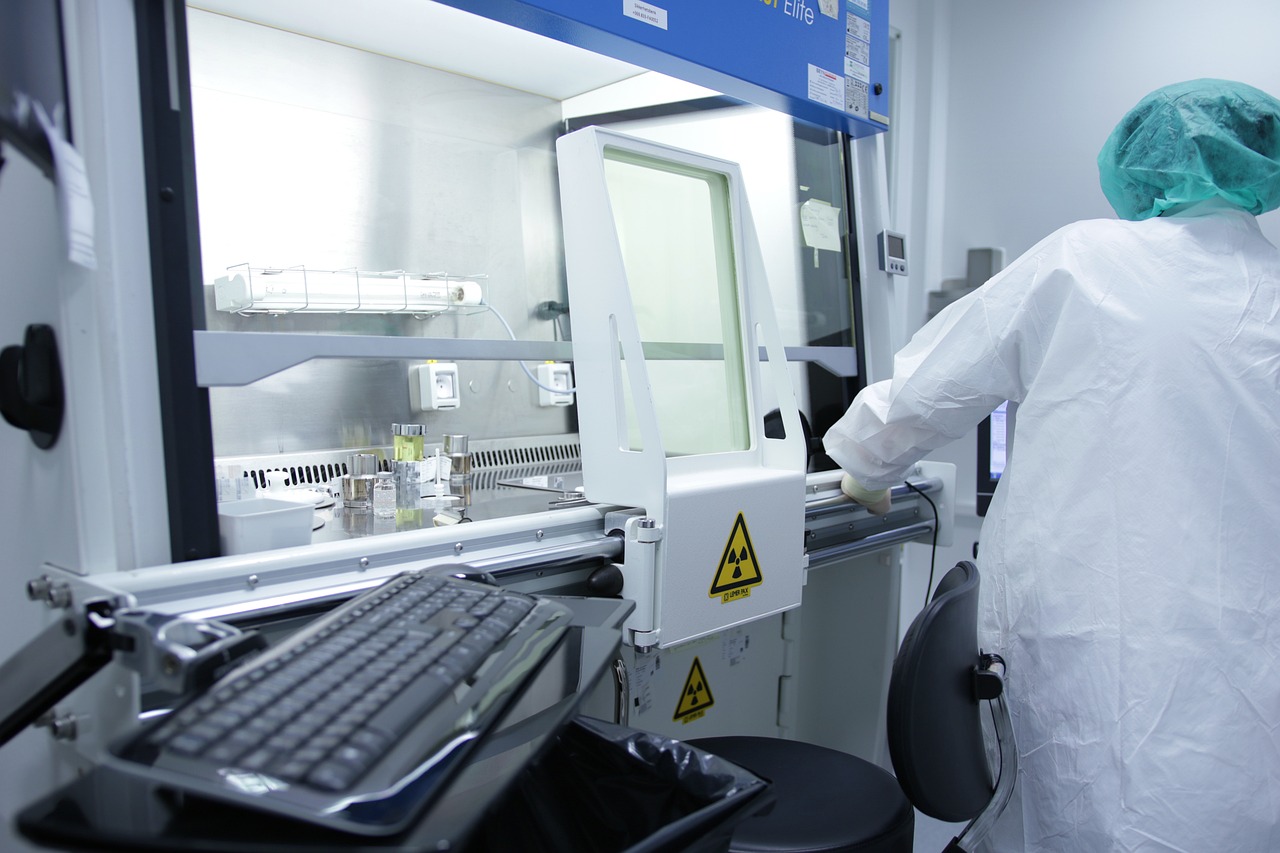In pharmaceuticals, the quest for safer more effective drugs is a relentless pursuit. As drug formulations become increasingly complex, understanding the surface chemistry of pharmaceutical materials has emerged as a critical factor in ensuring the efficacy, stability, and safety of medications. One of the most advanced techniques for probing surface chemistry at the molecular level is X-ray Photoelectron Spectroscopy (XPS).
This powerful analytical method provides invaluable insights into surface elemental composition and chemical states, helping researchers unlock new possibilities in drug development and material science. Let’s explore the role of XPS in pharmaceutical research, highlighting how commercial laboratories are driving breakthroughs that could reshape the future of medicine.
The Importance of Surface Chemistry in Pharmaceuticals
Surface chemistry plays a crucial role in the performance of pharmaceutical materials, particularly in drug delivery systems, coatings, and active pharmaceutical ingredients (APIs). The interaction between a drug and its surrounding environment, whether it’s the biological milieu in the human body or the packaging materials used for storage, is often governed by the chemical properties of the material’s surface.
For example, the dissolution rate of an oral drug, which directly impacts its bioavailability, can be significantly influenced by the surface chemistry of the drug particles. Similarly, the stability of a drug formulation during storage may depend on how well its surface interacts with excipients, moisture, or other environmental factors. Understanding these interactions at a molecular level is essential for optimizing drug formulations, enhancing therapeutic outcomes, and ensuring patient safety.
Understanding XPS: A Window into Surface Chemistry
X-ray Photoelectron Spectroscopy (XPS) is a highly sensitive technique used to analyze the elemental composition, chemical state, and electronic state of the atoms within a material’s surface. By irradiating a material with X-rays, XPS measures the kinetic energy of electrons ejected from the surface, providing a detailed spectrum that reveals the types and quantities of elements present, as well as their chemical bonding environments.
What makes XPS particularly valuable in pharmaceutical research is its ability to analyze the topmost layers of a material, typically within the first few nanometers. This depth of analysis is ideal for studying surface phenomena that directly impact the performance of pharmaceutical products, such as surface contamination, coating uniformity, and molecular interactions at interfaces.
Breakthrough Applications of XPS in Pharmaceutical Research
XPS has become an indispensable tool in pharmaceutical research, offering critical insights that contribute to the development of safer, more effective medications. Some of the key applications of XPS in this field include:
1. Characterization of Drug Delivery Systems
Drug delivery systems, such as nanoparticles, liposomes, and polymer-based carriers, are designed to improve the bioavailability, targeting, and release profile of therapeutic agents. The surface properties of these systems are crucial for their interaction with biological tissues, immune response, and overall efficacy. XPS allows researchers to precisely characterize the surface chemistry of drug delivery systems, providing information on the presence of functional groups, coating materials, and surface modifications.
For example, in the development of targeted drug delivery systems, XPS can be used to confirm the presence and distribution of targeting ligands on the surface of nanoparticles. This ensures that the drug delivery vehicle will effectively recognize and bind to the desired cellular receptors, enhancing the specificity and efficacy of the treatment.
2. Analysis of Pharmaceutical Coatings
Coatings are widely used in pharmaceuticals to control the release rate of active ingredients, protect drugs from environmental factors, and enhance patient compliance. The uniformity and integrity of these coatings are critical for the consistent performance of the drug. XPS provides detailed information about the elemental composition and chemical states of coating materials, allowing researchers to assess their uniformity, thickness, and adhesion to the underlying substrate.
For instance, in sustained-release tablets, XPS can be used to analyze the surface of the coating to ensure that it provides the desired release profile over time. Any deviations in the coating’s composition or uniformity could lead to variations in drug release, potentially compromising the efficacy and safety of the medication.
3. Detection of Surface Contaminants
Contamination of pharmaceutical materials can lead to adverse effects, including reduced efficacy, instability, or even toxicity. XPS is highly effective at detecting trace levels of contaminants on the surface of pharmaceutical materials, such as residual solvents, cleaning agents, or packaging-related impurities. By identifying these contaminants, researchers can take corrective actions to purify the materials and ensure compliance with stringent regulatory standards.
For example, during the manufacturing process, APIs may come into contact with various surfaces, leading to potential contamination. XPS can be employed to detect and quantify these contaminants, ensuring that the final product is free from harmful substances and meets quality standards.
4. Investigation of API-Excipient Interactions
The interaction between active pharmaceutical ingredients (APIs) and excipients can significantly impact the stability, solubility, and bioavailability of a drug. XPS allows researchers to study these interactions at the molecular level, providing insights into how excipients may affect the surface properties of APIs. This information is crucial for optimizing formulations and ensuring the consistent performance of the drug.
For instance, in tablet formulations, excipients such as binders, fillers, and lubricants come into direct contact with the API. XPS can help determine how these excipients interact with the API’s surface, potentially influencing its dissolution rate or stability. By understanding these interactions, researchers can select the most appropriate excipients to achieve the desired drug performance.
The Role of Leading Laboratories in Advancing XPS Applications in Pharmaceuticals
Wintech Nano is at the forefront of applying XPS technology to pharmaceutical research, offering specialized services that help pharmaceutical companies optimize their products for safety and efficacy. With a deep understanding of the challenges and opportunities in the pharmaceutical industry, the laboratory provides tailored XPS analysis that meets the specific needs of each research project.
One of their key strengths is their ability to deliver high-resolution, high-sensitivity XPS analysis that reveals the most subtle surface characteristics of pharmaceutical materials. Whether it’s characterizing the surface of drug delivery systems, analyzing the uniformity of coatings, or detecting trace contaminants, their team of experts ensures that clients receive precise and actionable data that drives innovation in drug development.
Moreover, the company is committed to staying at the cutting edge of XPS technology. By continually investing in the latest instrumentation and refining their analytical methodologies, they provide pharmaceutical researchers with the most advanced tools to solve complex challenges in material science and formulation development.
This dedication to excellence has made them a trusted partner for leading pharmaceutical companies and research institutions worldwide. By leveraging their expertise in XPS, these organizations can accelerate their drug development pipelines, improve product quality, and ensure compliance with regulatory requirements.
Future Perspectives: Expanding the Horizons of XPS in Pharmaceuticals
As pharmaceutical formulations become more sophisticated, the demand for advanced analytical techniques like XPS is expected to grow. Future developments in XPS technology, such as enhanced spatial resolution, faster data acquisition, and integration with complementary techniques (e.g., Atomic Force Microscopy, AFM), will further expand its applications in pharmaceutical research.
For example, the development of combination therapies that involve multiple APIs with complex surface interactions could benefit from the detailed surface analysis provided by XPS. Additionally, as personalized medicine continues to gain traction, XPS may play a crucial role in characterizing the surface properties of customized drug formulations designed for individual patients.
Conclusion
X-ray Photoelectron Spectroscopy (XPS) has become an indispensable tool in the field of pharmaceutical research, offering molecular-level insights that are critical for the development of safer, more effective drugs. By providing detailed information about the surface chemistry of pharmaceutical materials, XPS helps researchers optimize drug formulations, improve product stability, and ensure compliance with regulatory standards. Third-party laboratories are leading the way in applying XPS technology to pharmaceutical challenges, delivering high-quality analysis that drives innovation and enhances the quality of medicines. As the pharmaceutical industry continues to evolve, XPS will remain a vital technique in the quest to develop the next generation of therapeutics that improve patient outcomes and quality of life.
Avid Writer with invaluable knowledge of Humanity!
Upcoming historian with over 30 million views online.
“You make your own life.”





